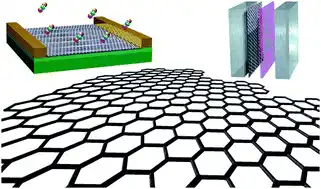افشین رشید
اُستادیار ؛ عضو هیات علمی دانشگاه آزاد اسلامی واحد علوم و تحقیقات تهران
601 یادداشت منتشر شدهInvestigation of The Self-organized Electrical Nanostructure DND and The influence of Nanoelectromagnetic interactions on The Energy Characteristics of Nanoelectrons (Nanostructures)

Note: The important characteristic of all nanostructures is that the number of atoms (surface) in them is greater than the number of atoms (volume). This ratio increases with decreasing size (nanoparticle). Therefore, the size of the nanoparticle is considered its important characteristic.
The shapes and sizes of nanostructures are naturally determined by their composition and formation conditions. The properties of nanostructures, in turn, determine the originality of the nanostructure properties and their possible fields of application. The range of 1 to 1000 nm is introduced as the range of nanostructures, an important feature of nanostructures is the control of the processes of their organization. The range of change in the activity of the nanostructure depends on the nature and shape of the nanostructure. However, if the energy of the nanoparticle field is comparable to the energy of electromagnetic radiation and if significant changes occur in the irradiated material within a certain wavelength range due to the occurrence of chemical reactions, the activity of nanoparticles will be significant up to the size of 100 nm.

The surface atoms of nanostructures are not compensated in terms of energy. In general, the energy growth of a nanoparticle can be expressed as the total energy of the surface atoms of the particle. At the surface of nanostructures, the freedom of movement of the surface atoms is limited, and only vibrational movements and electron motion are possible. These two types of motion are interdependent because the displacement of the electron clouds of atoms necessarily changes the vibrational frequencies of the bonds of atoms. On the other hand, the change in the location of the valence electrons in the bonds changes the polarity of the bond and the objects called the molecular superstructure, in which case the electron transfer to a higher energy level becomes possible.
Conclusion :
Nanoparticle bonds at the surface of nanostructures can increase the electronic structure change and, as a result, nanoelectromagnetic interactions increase the number of single electrons and the number of nanoelectromagnetic moments of atoms.